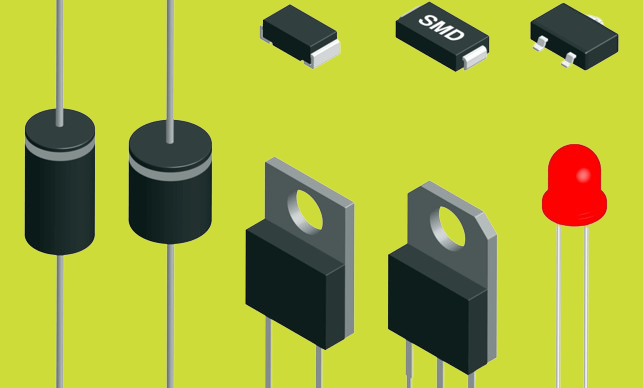Solid-state components are electronic devices or elements that rely on the principles of solid-state physics, primarily utilizing semiconductor materials like silicon. These components have no moving parts and are characterized by their reliability, efficiency, and compact size. Solid-state technology has largely replaced older technologies, such as vacuum tubes, in the design and manufacturing of electronic devices. Here are some common types of solid-state components:
- Diodes:
- Semiconductor devices that allow the flow of electrical current in one direction only. Diodes are used in rectifiers, amplifiers, and various electronic circuits.
- Semiconductor devices that allow the flow of electrical current in one direction only. Diodes are used in rectifiers, amplifiers, and various electronic circuits.
- Transistors:
- Semiconductor devices that can amplify or switch electronic signals. Transistors are fundamental building blocks in electronics and are used extensively in amplifiers, oscillators, and digital circuits.
- Integrated Circuits (ICs):
- Compact arrangements of multiple electronic components, such as transistors, resistors, and capacitors, on a single chip. ICs are the foundation of modern electronics and are found in computers, smartphones, and countless other devices.
- Semiconductor Lasers:
- Diodes that emit coherent light when an electric current is applied. Semiconductor lasers are used in optical communication, laser printers, and various sensing applications.
- Light-Emitting Diodes (LEDs):
- Semiconductor devices that emit light when an electric current is passed through them. LEDs are widely used for lighting, displays, indicators, and in numerous electronic applications.
- Field-Effect Transistors (FETs):
- Transistors that control the flow of current using an electric field. FETs are commonly used in amplifiers, voltage regulators, and digital circuits.
- Capacitors and Resistors:
- Solid-state capacitors store and release electrical energy, while resistors limit the flow of current. Both components play essential roles in shaping the behavior of electronic circuits.
- Thyristors and Triacs:
- Semiconductor devices used for controlling and switching electric power. Thyristors and triacs find applications in power control circuits, motor control, and dimmer switches.
These solid-state components are the building blocks of electronic systems and devices, contributing to the advancement of technology and the miniaturization of electronic products. The field of solid-state electronics has had a profound impact on various industries, from telecommunications to consumer electronics and beyond.
Advantages of Solid State Devices
Size and Weight: Solid state components are much smaller and lighter than vacuum tubes.
Reliability and Durability: With no moving parts or filaments to burn out, solid state devices are more reliable and last longer.
Efficiency: They consume less power and generate less heat compared to older technologies.
Speed: Solid state devices can operate at much higher speeds, making them ideal for computers and other high-speed applications.
Applications
Solid state technology is found in virtually every electronic device, from smartphones and computers to televisions and home appliances. They are also crucial in telecommunications, medical equipment, and industrial automation.
Future of Solid State Technology
The future holds exciting possibilities for solid state components. Research in materials like graphene and silicon carbide (SiC) promises even more efficient and powerful devices. Additionally, the ongoing development in nanotechnology and quantum computing could revolutionize how solid state components are used, leading to unprecedented advancements in technology.
Solid state components have transformed the electronic world, making possible the advanced technologies we use daily. As research continues, they will undoubtedly play a central role in future innovations and technological breakthroughs.
